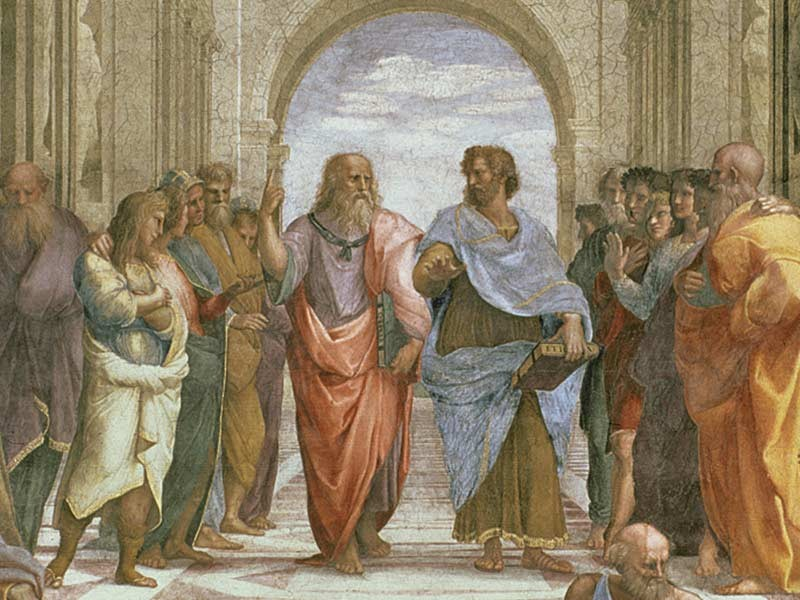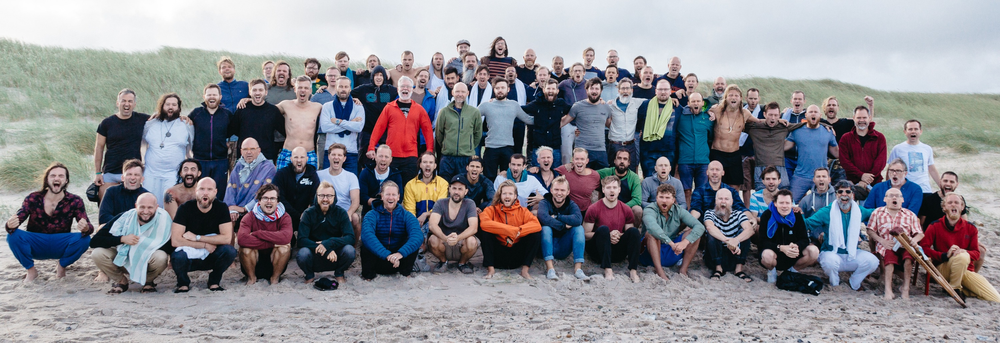The Patriarchy Maniphesto
This post is outdated, as it applies to a previous version of the principle. Please bear with us as we update it.
Hierarchy and Fatherhood are indispensably woven into all of life. Virtuous patriarchy is essential to human thriving.
Welcome to the Patriarchy!
Patriarchy comes from two Greek words, “pater” for “father” and “arche” meaning “first/founding principle, source or authority”. The word thus refers to “the rule of the father” and a hierarchal system of organisation springing from a “father figure”.
Human society lays itself out in a patriarchal pattern. This is not an ideological position but simply a technically correct description of reality. None of us have ever existed outside of patriarchy and destroying patriarchy entails destroying human society. The purpose of this text is thus to help better understand the specific attributes of patriarchy in our society.
The Necessity of Value Hierarchy
Human existence and meaning depends on hierarchy. We humans act based on a hierarchy of values. The moment that there is nothing that is better than anything else, we are unable to prioritise, create meaning or even act. Having a clear hierarchy of values means that we are able to easily make decisions, move and act with a sense of purpose.
Importantly, we should note that science is intentionally free from values – the scientific method is deliberately kept neutral regarding values. It is a method to describe the world rather than normatively interpret it. Good scientists are very aware of the negative effects of value bias and normativity on their work, and systematically attempt to eliminate it. This results in good science being able to give increasingly accurate descriptions of material reality. And also, it means that science is voluntarily silent on questions of human value – that is the field of religion.
Any reasonable person will recognise the need for a hierarchy of values. Ideologies which have had their express aim of removing all forms of hierarchy have often proven to be the most oppressive and tyrannical in practice. The purpose of this text is to present the case that patriarchy is the naturally emergent hierarchy of society.
Why not Matriarchy?
The first question which can come to mind in a conversation on patriarchy is, “why male and not female headship?” or “Why should men and not women be in positions of power and authority?” One of the most obvious answers to this is found in the way that human life, society and families function and reproduce themselves.
The most important function of any society of humans is to give children the best possible start to life. Humans are unique in that they require an incredible amount of care and attention in the early years of their life, even all the way up to puberty and beyond. It is in the early years of our life that the basic patterns of life are set. A child which receives as much love and human connection as possible, will have a far better start to life than one who does not receive the same. It is at this time, when the mother has a vital role, which she and only she is also uniquely gifted in performing.
When a child is born, she comes out of the body of the mother. For the first period of time, she usually receives all of her nourishment directly from the mother’s breasts. It is not difficult to see that mothers have a unique and powerful personal connection to their child which fathers do not have. That connection is a strong part of the reason why more mothers naturally chose to prioritise their family life over career and positions of societal authority.
All studies of the subject show that children thrive the most when they have as much time and attention from both of their biological parents as possible. Men and women should always have equal opportunity to reach any job which they would like to, and also to spend as much time with their children they would like to. Of course we would recommend prioritising spending time with the family as high as possible contra working. And we also see that, it is natural for most families, and for the best of at least a majority of both men and women, that it is primarily the mother who has a primary role as caregiver in a family, while the father takes on a primary role as the protector and provider.
Any insistence that women should be equally represented in high powered, high income jobs is ignoring the needs of children to have a parent who can provide the most love and human connection possible. To think that state employees can successfully take over the role of motherhood is ridiculous. And it is also a de-valuing of motherhood its self, which is the most important task in our society, and also perhaps the most beautiful and joyful one at that.
We see therefore, that a society which prioritises the needs of children as higher than the careers and “self realisation” of men and women, one will naturally see more mothers choosing to use more time focused on their family, providing a loving and thriving environment for their children. Men on the other hand, will naturally use more time in the important but secondary task of protecting and providing for their families – which involves engaging in the responsible administration of societal authority.
Patriarchy and Tyranny
The modern discussion on patriarchy has been twisted out of recognition. Patriarchy is generally misconstrued as tyranny. But this could not be further from the truth. Irrespective of whether one is a Christian or a biologist, then everyone knows that the natural response of a father is to love and to cherish his child. Families and societies where fathers provide their children with the strongest and most appropriate paternal love will be the ones that thrive the most. Far from being a tyrannical system of oppression and misuse of power, patriarchy is fundamentally opposed to tyranny.
This is important. We are not discussing androcracy – which is simply the rule of men. Patriarchy is the rule of the father, and to be a father is to have natural interest in the well-being of those you have fathered.
Everything and everyone comes from a father. This is true for every living human and animal in a biological sense. And it is also true in a metaphorical sense for anything from the inanimate level, to the level of communities, societies and nations – all of these have a father figure at their birth. Very occasionally, a female will take the role of a “founding father”, such as Marie Curie did in the area of radioactivity. But as a general rule, founding fathers are men. Thus, patriarchy is really a technical description of the pattern of society, which we can align with and optimize when we accept it and learn its nuances.
The pattern of patriarchy
What is this pattern that we are describing? Given that human hierarchy is oriented around value, these are not scientific categories but rather symbolic concepts. They can be seen repeatedly throughout reality, but one needs to take a phenomenological approach to seeing them, rather than a materialist approach. An example from biology is nevertheless helpful to understanding.
In human reproduction, a new human being is created through sexual intercourse in which a man penetrates a woman. This leads to the meeting of an egg from a mother’s body and a sperm cell from a father. The human egg is about 2 cm in diameter, while the sperm cell is 0.05mm in length. In volume, the egg is about 2 million times larger than the sperm cell. In the moment of contact, the sperm cell delivers a DNA code, a “pattern” or a “blueprint” for the child’s biological makeup. The sperm cell then dies, having done its job as the transmitter of information. All of the body of the child then comes from the body of the mother. Nothing of the body of the child will at any time be provided from the body of the father.
Similar examples can be found at the societal level, or at the sub-human levels. Looking at the nation state for example, the creation of the American constitution by the Founding Fathers was the foundation of the United States of America. At the sub-human level a useful analogy is the comparison of men and women to the left and right hemispheres of the brain. The left, “masculine” side of the brain is the rational, deductive, compartmentalizing side responsible for logical processing and creating order. The right, “feminine” side is more connected to the subconscious, creative, intuitive, chaotic side that we experience in our dreams or in a hallucinatory experience.
These analogies provides some insight into complementary relationship between men and women. Obviously the Founding Fathers would not be remembered by anyone if the nation had not accepted their work and found it to work. Human reasoning is fully dependant on the interaction between brain hemispheres as the left brain is greatly handicapped if it doesn’t have input from the right and vice versa.
The general characteristic of this fatherhood/motherhood pattern is that the father provides the blueprint / structure / head / “Logos”. The Mother provides the body / life / earth / substance. Both are essential and equal in value, but it is relevant to note that the masculine role is often the more visible one, and also the one which our society attaches more honour and glory to – that of leadership and the exercise of authority.
This presents us with the inherent challenge with patriarchy and the issue which feminists and post-modernists get right – that a patriarchal system is susceptible to capture by a tyrant and thereby subversion. The way that societies have dealt with this challenge is through religion – and in the West it has particularly been through the Christian faith that we have attempted to protect patriarchy against subversion.
Patriarchy, government and Christianity
In order to ensure that patriarchy is kept in check, a standard of correct behaviour is required. The entire system of statecraft is focused on creating structure with exactly this end in mind. Modern states have constitutions, democratic elections, checks and balances of power such as the three divisions of state powers between legislative, executive and judicial branches of government and the media role as “government watchdog”.
All of these are vital and necessary tools for ensuring a patriarchal system which can thrive and protect its self against tyranny. And for our purposes here, it is vital to understand that there is also a higher level which governs the way that all of these work – it is religion which defines and is the source of how we understand what it means to exist as a person, as a society and as “fatherhood”. Particularly, for the last 1500 years in Europe, the understanding of fatherhood was inextricably tied together with “Our Father”, God of the Christian Faith.
At the centre of the Christian faith, is the idea of God as the “Holy Trinity”, “Father, Son and Holy Spirit”. Jesus Christ is the Incarnation of God. He is Son, but is also in and of the Father. As God, He is the inpersonment of all of the highest conceivable merits and virtues of any hierarchy, or more correctly, apophatically defined as above and beyond humanly comprehensible hierarchy. And yet, He is born in the most humble and lowly of conditions in a cave. After a life of service and ministry of love, shortly before His crucifixion, Christ washes the feet of his disciples, to their great astonishment and confusion, to teach them about hierarchy. Finally, as his ultimate act, Christ willingly submits Himself to be wrongly accused by his own people, betrayed, abandoned and denied by his closest friends and then crucified by the Romans, and after three days to be resurrected after “defeating death by death”. In this manner he wins the Roman Empire to himself and becomes without comparison the most influential person ever to exist.
Irrespective of one’s perspective on this story, it is helpful to realize that it is the most powerful, foundationally formative and well known story ever told – and more importantly, it has been the constituting story of our society. It establishes and constitutes a very clear patriarchal hierarchy, in that God is a loving, caring Father. It is the foundational story of our understanding of patriarchy, which places self sacrificing love as the ultimate arbiter of authority.
You don’t have to believe in God to realize that the hierarchy of our society is built upon this, and also to see that it has considerable inherent benefits, not least the raising up of self sacrifice and compassion to the ultimate source of authority. It also explains perfectly our society’s slide into dysfunctional postmodernism as secularism has eaten away at belief in God. If you remove God as the highest point and the organizing principle of the hierarchy, then you need to replace Him with something else. Postmodernists generally focus on the arbitrary use of power in order to oppress and manipulate others.
This of course goes a long way in explaining why postmodern identity politics typically degrade into a flattening and disintegration of any recognisable order. This of course is not a stable state of affairs and shortly followed by the arbitrary exercise of power by the postmodernists themselves against anyone attempting to uphold a traditional form of hierarchy, such as meritocracy.
What we thus see, is that the fundamental presence of patriarchy remains, but is vulnerable to capture, subversion and being twisted and distorted into a caricature of itself. Masculine virtue such as strength in character is pumped up into aggressive gangster masculinity, big muscles and the ability to physically dominate opponents. These traits are then even glorified in women, while masculine men and feminine women are looked down upon. Men compete to appear more vulnerable and fragile and particularly men who decide to “become women” as transgender people are raised up as particularly worthy of emulation.
Top-down vs. bottom-up
The description of Christianity we have given here is focused on the “top-down” aspects of religion – how an understanding of God as “Father” at the highest level has informed the way that we structure fatherhood at every level of our lives. In order to create a thriving system, it is vital that top-down and bottom-up complement each other, instead of opposing each other. This means that a top-down framework cannot simply be enforced on a society through the exercise of authority or coercion. Instead, for a society to be peaceful and function well, the internal hierarchies of every member of a society have to voluntarily come to the same realisation and insights of the nature of a good hierarchy. The dynamic of top-down provision of structure and leadership from the “head” needs to be met by an equivalent bottom-up voluntary and peaceful, appreciation and submission from the “body”.
Of course, in any society, there are always going to be people who reject authority and centralised power inherent in patriarchy. This is why it is vital for a good patriarch to accept that there will always be “outsiders”, a “rebellious margin” or opposition. Irrespective of the merit and reasons for this opposition and rebellion, it is vital that the margin is given as much benefit of the doubt as possible, respected as equal in value and given space to oppose. At the same time it is important to not allow the margins to “destroy the center”. Putting rebellion at the center of any group will of course destroy any possibility of unity and peace – and explains of course much of the difficulties we are facing in Western society today.
It is navigating exactly this balancing act, of finding the way between the priority of protecting and caring for the whole, while respecting and remaining in loving, constructive dialogue with the “edges” that is the art of the good patriarch. When done well, it is what allows those who are sceptical of the top to test it, to approach with caution, and eventually, to be able to be joined with the rest of society in a “more loving union”.
Conclusions and perspective
Patriarchy is a technically correct description of the pattern of human society. Attempts to destroy patriarchy lead generally to a more twisted and dysfunctional patriarchy, most recently often with women taking the “patriarchal power roles”, by adopting masculine values and disregarding the value of femininity and especially motherhood.
In order to protect Patriarchy from capture and subversion into tyranny, objective standards of right and wrong are required. These standards will typically be found at the religious level, and thus we need to address the religious level of society – with great care and respect for each other’s differences. Understanding the need to prioritise the well being of children is also a vital key in ensuring a strong protection of patriarchy against tyranny. The more that our standards of patriarchy are based on a relationship of loving understanding, instead of coercion, the more they will be successful in creating unity and peace.
In men’s work, we have found that for the individual man, understanding the nature of patriarchy often starts with reconciling and bringing peace and forgiveness to one’s own relationship with his biological father. It is through this lens that one can heal the relationship with father figures and authority figures in general, and also begin to take a productive and contributive role in the patriarchal system.
Additional Resources:
JONATHAN PAGEAU – Patriarchy. Not what you think it is.
Reality is Patriarchal – /w Fr Hans Jacobse
Do this and Life will fall into place – Purpose /w Fr Josiah Trenham





Responses